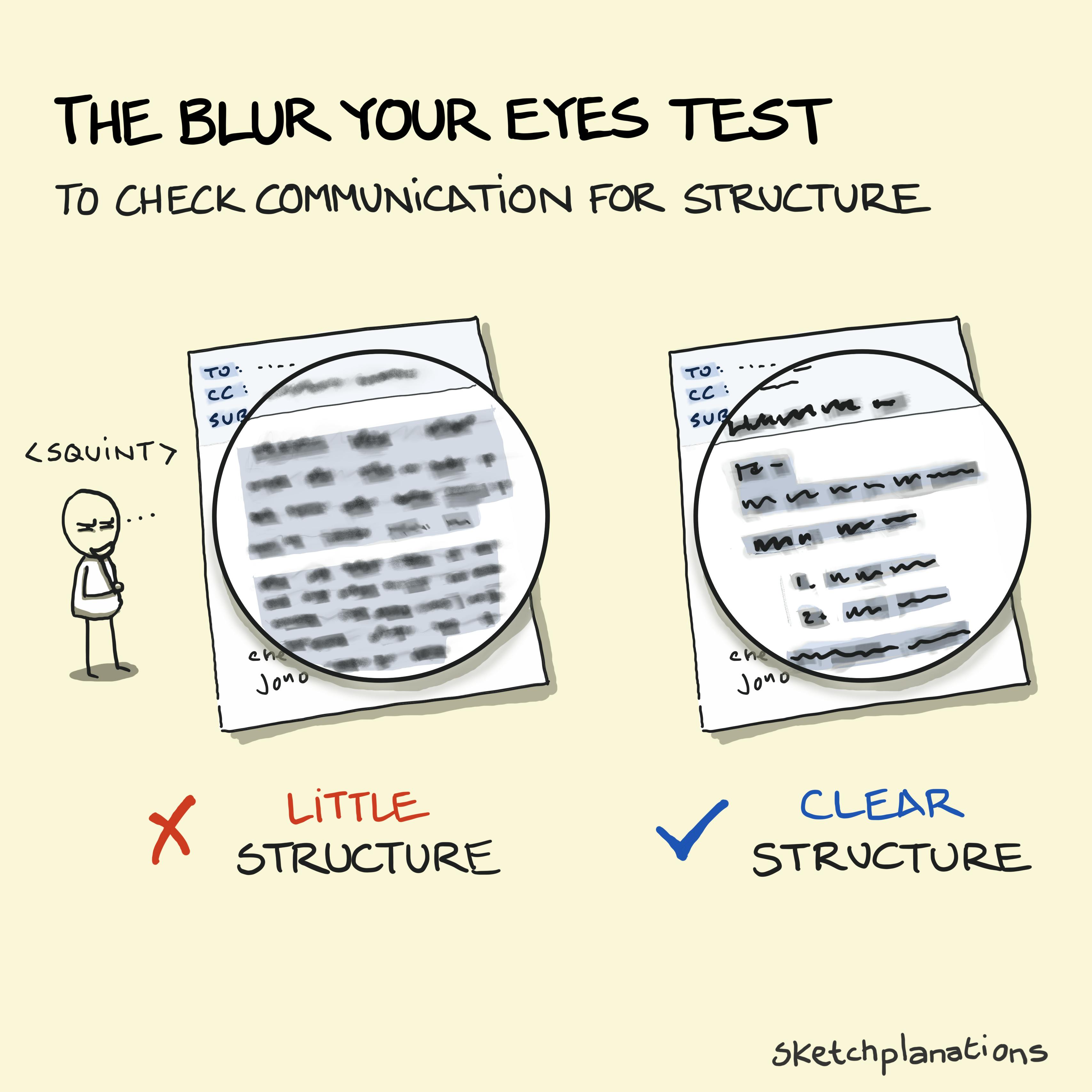The Blur Your Eyes Test

- Prints
- Copied!
👇 Get new sketches each week
The blur your eyes test is a way to evaluate the big picture and clarity of communication and designs by squinting to blur your eyes. Good designs give you a sense of the structure, even through a blurry lens. Poor designs leave you no wiser.
What is the blur your eyes test?
The blur your eyes test is a practical first screen for evaluating most communication, even if you don't consider yourself a designer. It works because it's simple and tests whether you're making life easy for the reader.
To try it, head to a well-designed web page and squint until your vision is blurred. Can you still get an idea of the page even without seeing the details?
If I blur my eyes, where do I expect the key message to be, and what are the supporting messages? Where do I expect to click if I want to continue? My team probably got sick of me squinting my eyes, asking them to do the same, and reporting that it wasn't apparent to me what to expect.
Because people naturally skim content, making it as easy as possible to understand your message is essential. Clear hierarchy. Obvious next steps. It's also why Happy Talk Must Die and why wireframes and low-fidelity prototyping are helpful.
Communicating with Busy People
I spent a little time with Stanford design Professor Larry Leifer. Like all Professors, people constantly inundated him with requests for his time and expertise—I sometimes wonder how talented academics cope. If you were writing to him—or anyone—you could help him and yourself by being clear.
Clear was not just in the message and the words you wrote but also in the structure of your writing. He told me that he felt you should be able to narrow your eyes to blur your vision and still see the basic structure of an email: greeting, intro or context, ask, sign off. Well-structured emails were more likely to get his attention and response because you'd made it easy for him to deal with.
I've applied that tiny snippet of advice thousands of times since when writing emails, Slack messages, product releases, announcements, invitations, page designs, banners, chats and articles. As I reviewed more and more designs, I would use it to check, "Are we making this easy for the reader?"
And yes, I also use it for Sketchplanations. Try blurring your eyes on past sketches and see if you think they pass—I'm sure I don't always manage it. It's also part of why I love the idea sketch format on which I've based so many sketches.
The blur-your-eyes test works to communicate with busy people—and we're all busy people when we're trying to find what we want on the internet.
As a separate lesson, another Stanford Professor, Bernie Roth, also taught me that a short, polite, timely rejection is much more valuable than a delayed, in-depth rejection.
Ideas Related to the Blur Your Eyes Test
Also see:
- Design for a Glance, a Look, and a Read
- Inverted Pyramid writing
- Happy talk must die
- Omit unnecessary words
- The Minto Pyramid Principle
- Short Words are Best
- How to Speak Plainly

